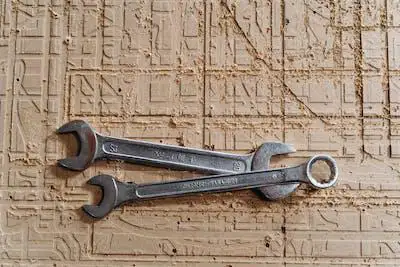The answer, like most things in life, is a nuanced "it depends." To truly understand whether a repair will be a lasting solution, we need to delve into the detective work of leak identification, the intricacies of repair methods, and the proactive measures that can keep your roof leak-proof for years to come.
Diagnosing the Drippy Culprit:
Before patching up the hole, identifying the source of the leak is crucial. A thorough inspection, ideally by a qualified roofer, is your first line of defense. They'll meticulously examine the roof surface, flashings around vents and chimneys, gutters, and even inside your attic for telltale signs of moisture intrusion.
person inspecting a roof with binoculars
Common culprits behind leaky roofs include:
Missing or damaged shingles: Cracked, warped, or loose shingles create entry points for water.
Flashing failure: The metal sheets around roof penetrations like chimneys and skylights can rust, crack, or pull away, allowing water to seep in.
Clogged gutters: Overflowing gutters can back up under the shingles and infiltrate the roof.
Improper attic ventilation: Inadequate ventilation can lead to moisture buildup and condensation, eventually rotting the roof from the inside out.
Repairing for the Long Haul:
Once the culprit is identified, the appropriate repair method can be implemented. Here are some common options:
Shingle replacement: Damaged shingles are simply replaced with new ones, ensuring proper water channeling.
Flashing repair: Rusted or loose flashing is patched or resealed to create a watertight barrier.
Gutter cleaning and repair: Clogged gutters are cleared, and any leaks or damage are fixed.
Attic ventilation improvement: Additional vents or adjustments to existing ones can be installed to promote proper airflow and prevent moisture buildup.
The quality of the repair itself plays a vital role in its longevity. Opt for skilled roofers who use high-quality materials and follow proper installation techniques. A shoddy patch job might provide temporary relief, but it could lead to bigger problems down the line.
Beyond the Patch: Proactive Leak Prevention:
A repaired roof is great, but a leak-proof roof is even better. Here are some proactive measures you can take to minimize the risk of future leaks:
Regular inspections: Schedule annual roof inspections by a qualified professional to identify and address minor issues before they escalate.
Preventative maintenance: Keep your gutters clean and free of debris, trim overhanging branches that could damage the roof, and seal any cracks or gaps around roof penetrations.
Invest in quality materials: When considering a roof replacement, choose durable materials with a long lifespan and warranty.
Mind the weather: If you live in an area prone to harsh weather conditions like heavy snow or strong winds, consider storm-resistant roofing options.
Remember, a healthy roof is a happy home. By understanding the causes of leaks, implementing proper repairs, and practicing proactive maintenance, you can transform your roof from a potential leaky mess into a sturdy shield against the elements, keeping your home dry and your sanity intact for years to come.
Bonus Tip: Technology can be your friend! Consider investing in leak detection systems that use sensors to monitor your roof for moisture buildup and alert you to potential problems before they turn into full-blown leaks.
I hope this information helps you navigate the sometimes-murky waters of roof repairs and leak prevention. Remember, knowledge is power, and a proactive approach is key to keeping your roof – and your peace of mind – leak-free!

